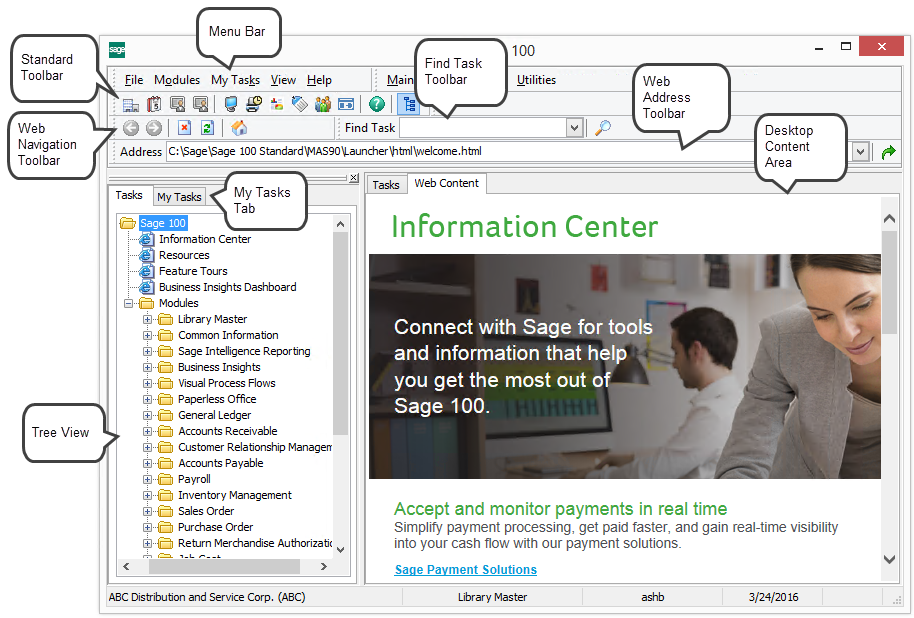
Standard Toolbar
The Standard toolbar consists of buttons
used to access common tasks. You can show or hide the toolbar
by clicking Toolbars on the View menu and selecting or clearing
the Standard Buttons option. The Standard toolbar displays by
default and can also be moved and resized.
Menu Bar
The menu bar consists of the standard
menus, File through Help, that provide access to module menu tasks
and other features. When you select a menu, a drop-down menu appears
listing the tasks for that menu.
Find Task Toolbar
Use the Find Task toolbar to quickly
locate a task in the software. Type the task name and click the
Lookup button. You can enter the name of the task or part of the
task name to display a list of tasks containing the name.
Desktop Content Area
Depending on what you select from the
Tasks tab, either the Desktop web pages or the Tree View area
displays. The Desktop Web pages appear on the Web Content tab
and include the Information Center, Resources, Featured Tours,
and Business Insights pages.
Status Bar
The Status Bar displays information
about the current Desktop settings. The company name and company
code appear, along with the name of the module currently active,
the user ID, and the accounting date for the current module. To
change the company, module, user, or date that displays in the
Status Bar, click the applicable area in the Status Bar. The appropriate
dialog box appears. For example, if you are changing modules,
the Switch To Module dialog box appears.
The information displayed in the Status
Bar represents only the current status of the Desktop. Whenever
you select an option from the Desktop, the company and accounting
date displayed are used for the newly started task. All previously
started module windows remain in their existing company, user,
and date.
Note
The system date for Library Master must be changed in Windows.
Tree View
The Tree View provides a visual representation
of module menus and menu options depending on which module or
menu is selected on the Tasks tab.
My Tasks Tab
The My Tasks tab provides an area where
frequently-used tasks, such as menu tasks, desktop shortcuts,
and external programs can be added to public or private task folders
and stored for quick access. Public task folders, indicated by
the globe on the folder icon, are available to all users and are
stored on the server. Private task folders are available to individual
users and can only be accessed on the workstation from which they
are created.
Web Navigation Toolbar
Use the Web Navigation toolbar to navigate
through the Web pages in the Desktop and display its content on
the Web Content tab. You can show or hide the toolbar by clicking
Toolbars on the View menu and selecting or clearing the Web Navigation
option. The Web Navigation toolbar displays by default and can
also be moved and resized.

